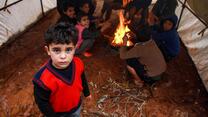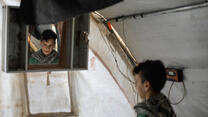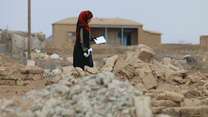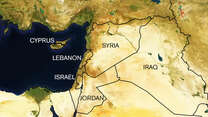As clashes continue despite a ceasefire agreement in northeast Syria, the International Rescue Committee is deeply concerned about the lives of Syrian Kurdish and Arab populations who have already survived ISIS brutality and multiple displacements during more than eight years of war. Here’s what you need to know about the impact of the Turkish military offensive.
What is happening in northeast Syria?
Three children have been killed and a further 31 injured as a result of the military offensive that began in northeast Syria on Oct. 9. All told, 70 people have died and 188 wounded, according to local organizations on the ground. Despite a recent ceasefire agreement, clashes continue. There is deep uncertainty and fear for many of the people living in northeast Syria, as they simply do not know what the future will hold for them.
More than 150,000 people have been forced to flee their homes, including at least 70,000 children. An additional 200,000 could still be displaced by fighting.
As we await further clarification on what the agreement that has been announced by Turkey and Russia will mean in practice, we urge all parties to the conflict to abide by their obligations under international humanitarian law to protect civilians.
We also urge them to allow humanitarian organizations unhindered access to northeast Syria so that they can continue to assist the 1.6 million people living there who need support.
What is the humanitarian situation in northeast Syria?
“The IRC is deeply concerned about the impact of this escalation on civilians, including our own staff members and their families, and the destabilizing effect this will have on a population that has already borne the brunt of the eight-year-long conflict in Syria,” said IRC Middle East policy director Misty Buswell. “Many of these people have already been displaced multiple times and suffered horribly under the brutal rule of ISIS, only to be facing yet another crisis.”
The situation in northeast Syria is deteriorating rapidly. Many hospitals had to close during the offensive and those that remain open have been overwhelmed with casualties.
“We expect to see an increase in deaths from what are usually preventable diseases because of this, as there simply are not enough facilities to support those who have been displaced,” said Buswell. “Maternal mortality may also rise as it is increasingly difficult for women to gain access to the support they need.”
Organizations on the ground are finding it more and more difficult to reach those in need. A trauma stabilization point run by a local organization was hit by a suspected airstrike. Two ambulances were damaged, despite being clearly marked as humanitarian vehicles. Other civilian infrastructure has also come under fire.
There have been reports of civilians fleeing with only the clothes on their backs. Many fled to areas around Hassakeh governorate, some of whom, including unaccompanied children and women, are sheltering in schools. There are also reports of people sheltering in cars, trucks, makeshift shelters or simply living out in the open.
Others have fled to Raqqa, a city devastated by the battle against ISIS. Housing and electricity are limited in Raqqa and the city is littered with unexploded mines. Water supplies have also been damaged, meaning 400,000 people are at risk of unsafe water and being exposed to outbreaks of infectious diseases.
According to reports on the ground, more than 5,400 people have fled to northern Iraq, where a quarter of a million Syria refugees already reside.
The camps in the surrounding areas are also overstretched and any new displacement is likely to further push humanitarian services to their limit, just as the harsh winter weather approaches.
Also, a proposal to return many of the 3 million Syrian refugees in Turkey to so-called “safe zones” ignores whether the area is truly safe, and the fact that 8 in 10 of those refugees have never called that part of Syria home.
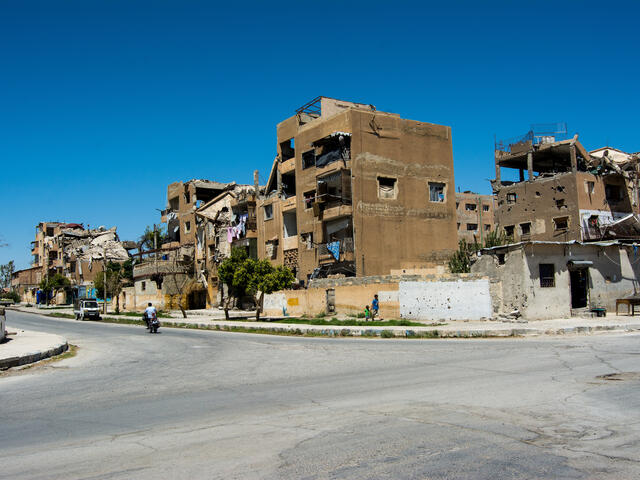
How is the IRC responding?
The IRC is providing lifesaving primary health care services via IRC-run centers and mobile medical teams in Hassakeh and Raqqa governorate. We are also providing legal services and support for vulnerable women and girls in Raqqa governorate. In addition, the IRC distributed food to new arrivals sheltering in camps and makeshift shelters, such as schools.
We call on all parties to the conflict to uphold their obligations under international humanitarian law to protect health facilities and other civilian infrastructure and ensure that civilians are spared from the worst impacts of the fighting. The IRC welcomes the announcement of a ceasefire, but this development must be judged in the deeds not words of the parties to the conflict.
The IRC has been delivering aid in Syria since 2012. Last year, the IRC and our partners delivered services to over a million people in the country. In northeast Syria, we are providing health care, emergency cash, psychosocial support and other vital services.
What can I do to help Syrians?
Donate Now. Help the IRC provide vital aid to families in Syria, and support our work around the world.
